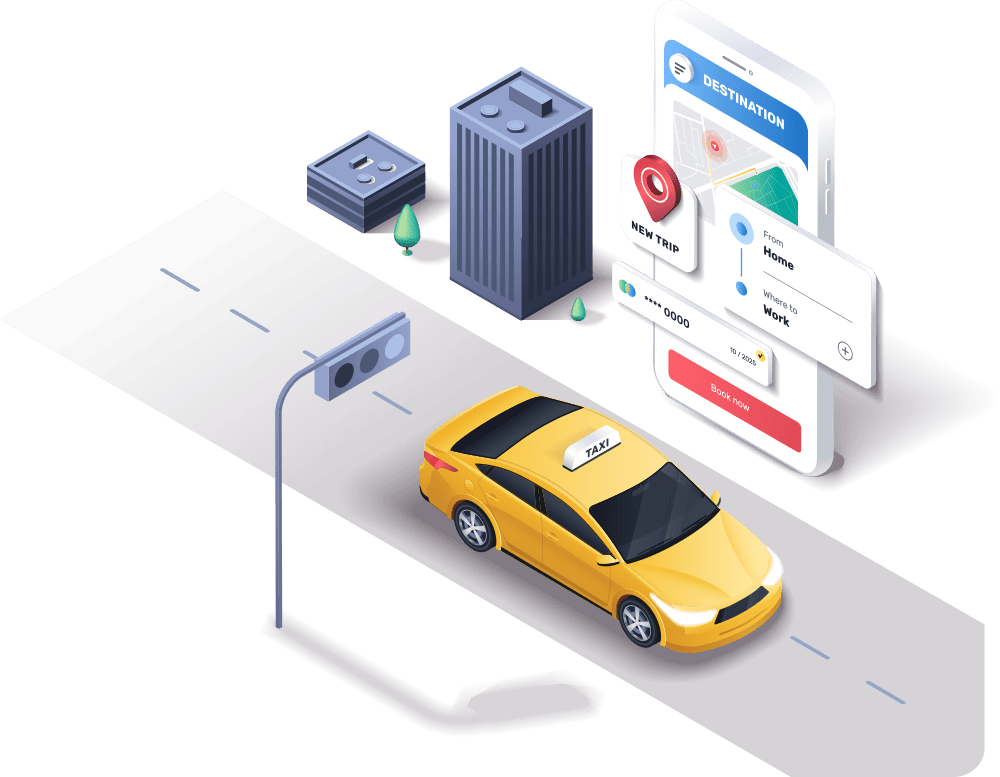
From Call to Cab: Taxi Dispatch System Operations
Efficient transportation has become a cornerstone of modern life, and Taxi Dispatch System are at the forefront of this evolution. These systems have transformed the way taxi services operate, ensuring a seamless journey from call to cab. In this article, we delve into the intricacies of Taxi Dispatch System, exploring their components, benefits, challenges, and future potential.
1. Introduction to Taxi Dispatch System
1.1 What Are Taxi Dispatch System?
Taxi Dispatch System are platforms designed to manage taxi bookings, allocate drivers, and streamline operations. These systems leverage technology to automate and optimize the dispatch process, replacing manual methods with efficient digital solutions. They form the backbone of modern taxi services, ensuring quick and reliable transportation.
1.2 The Evolution of Taxi Dispatch: From Manual to Digital
In the past, dispatching was a labor-intensive process involving radios and manual logs. The introduction of digital systems revolutionized the industry, integrating GPS tracking, mobile apps, and automated scheduling. Today’s systems are equipped with sophisticated algorithms, ensuring accurate and timely dispatches.
1.3 Importance of Dispatch Systems in Modern Transportation
The significance of Taxi Dispatch System extends beyond convenience. They enhance customer satisfaction, improve fleet utilization, and reduce operational costs. For passengers, it means faster pickups and transparent pricing; for operators, it translates to better profitability and scalability.
2. Core Components of Taxi Dispatch System
2.1 GPS Integration for Real-Time Tracking
GPS technology is the cornerstone of modern dispatch systems. It enables real-time tracking of vehicles, ensuring passengers and operators can monitor ride progress. This feature also enhances safety and accountability.
2.2 Mobile Applications for Drivers and Customers
Mobile apps have bridged the gap between drivers and customers. Through these apps, passengers can book rides, track their taxis, and make payments seamlessly. Drivers, on the other hand, receive trip details, navigation assistance, and payment updates.
2.3 Automated Booking and Scheduling
Automation reduces human error in booking and scheduling. Dispatch systems assign drivers based on proximity, availability, and vehicle suitability, ensuring optimal resource utilization.
2.4 Analytics and Reporting Features
Data analytics in dispatch systems provide insights into customer behavior, peak demand times, and fleet performance. These insights help operators make informed decisions and improve service quality.
3. Benefits of Taxi Dispatch System
3.1 Enhanced Efficiency in Fleet Management
Taxi Dispatch System optimize fleet utilization by reducing idle time and ensuring drivers are strategically positioned to meet demand.
3.2 Improved Customer Experience
With real-time tracking, prompt pickups, and transparent billing, dispatch systems significantly enhance customer satisfaction.
3.3 Cost Savings for Operators
Automation reduces administrative overheads and minimizes fuel wastage through efficient routing, leading to substantial cost savings.
3.4 Real-Time Updates and Communication
Instant communication between drivers, operators, and customers ensures that any issues are resolved promptly, enhancing reliability.
4. How Taxi Dispatch System Work
4.1 The Booking Process: From Call to Assignment
The process begins when a customer books a ride via an app or call center. The system identifies the nearest available driver and assigns the trip based on predefined parameters.
4.2 Driver Allocation Algorithms
These algorithms consider factors such as location, traffic, and driver availability to ensure optimal assignments, reducing wait times for passengers.
4.3 Role of AI and Machine Learning in Dispatch Systems
AI-driven systems predict demand patterns, optimize routes, and improve decision-making. Machine learning enables continuous improvement by analyzing historical data.
5. Challenges in Implementing Taxi Dispatch System
5.1 High Initial Setup Costs
Implementing a robust dispatch system requires significant investment in hardware, software, and training, which can be a barrier for small operators.
5.2 Resistance to Technological Change
Drivers and operators accustomed to traditional methods may resist adopting new technologies, slowing down implementation.
5.3 Cybersecurity and Data Privacy Concerns
As these systems handle sensitive customer and operational data, robust security measures are essential to prevent breaches.
6. Future Trends in Taxi Dispatch System
6.1 Integration with Ride-Sharing Platforms
Taxi Dispatch System are increasingly being integrated with ride-sharing platforms, offering customers more options and improving service availability.
6.2 Autonomous Vehicles and Dispatch
With the advent of autonomous vehicles, dispatch systems will evolve to manage driverless fleets, redefining the transportation landscape.
6.3 Predictive Analytics for Demand Forecasting
Predictive analytics will enable operators to anticipate demand surges, optimize fleet distribution, and enhance profitability.
7. Case Studies: Success Stories
7.1 Example 1: Citywide Efficiency Gains
A citywide taxi operator implemented a dispatch system, reducing average wait times by 30% and increasing customer satisfaction.
7.2 Example 2: Small Fleet Transformation
A small taxi service adopted a digital dispatch system, leading to a 20% increase in revenue and streamlined operations.
7.3 Lessons Learned from Real-World Deployments
These case studies highlight the importance of adaptability and continuous improvement in leveraging dispatch systems effectively.
8. Frequently Asked Questions (FAQs)
8.1 What is a Taxi Dispatch System, and how does it work?
A taxi dispatch system is a digital platform that automates ride booking, driver allocation, and fleet management to improve efficiency and customer experience.
8.2 How do Taxi Dispatch System improve fleet efficiency?
By optimizing routes, reducing idle time, and streamlining operations, these systems ensure maximum fleet utilization.
8.3 Are these systems suitable for small taxi operators?
Yes, many systems offer scalable solutions tailored to the needs of small fleets.
8.4 What are the costs involved in implementing a dispatch system?
Costs vary based on system complexity but typically include setup, training, and subscription fees.
8.5 How secure are Taxi Dispatch System against data breaches?
Modern systems incorporate encryption and other security measures to protect data, though operators must regularly update and audit their platforms.
8.6 What is the future of Taxi Dispatch System with AI and automation?
AI and automation will enhance system capabilities, including predictive analytics, autonomous vehicle management, and real-time optimization.
9. Conclusion:
From call to cab, TBMS Live reshaping transportation by enhancing efficiency, reducing costs, and improving customer experience. As technology advances, these systems will continue to innovate, setting new benchmarks for reliability and convenience in the industry.



